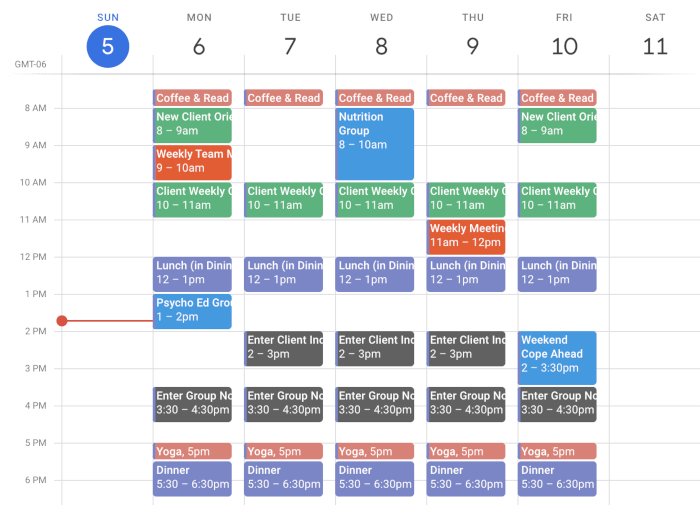Every Sunday evening, millions of professionals stare at their calendars with a familiar sense of dread. Another week flew by, important tasks fell through the cracks, and that nagging feeling of being perpetually behind schedule returns with a vengeance. Sound familiar? You’re not alone in this struggle, but there’s a surprisingly simple solution that successful entrepreneurs and productivity experts have been using for decades: a strategic weekly review template.
The difference between people who feel constantly overwhelmed and those who seem to effortlessly stay on top of their game often comes down to one habit. They dedicate just 30 minutes each week to a structured review process that transforms chaos into clarity. This isn’t about adding another task to your already packed schedule—it’s about creating a system that actually gives you time back.
Research shows that people who conduct regular weekly reviews report feeling 40% less stressed and accomplish 60% more meaningful work. The secret lies in having a proven framework that guides you through the essential questions and decisions that keep your life moving in the right direction. Today, we’ll explore how to build and implement a weekly review template that will revolutionize your productivity and give you back hours of your precious time.
Why a Strategic Weekly Review Template Transforms Your Productivity
The human brain isn’t designed to remember everything. Psychologists call this the “Zeigarnik Effect”—our minds obsess over unfinished tasks, creating mental clutter that drains our cognitive resources. When you operate without a weekly review system, you’re essentially asking your brain to serve as both the engine and the GPS for your life, leading to decision fatigue and scattered focus.
A well-structured weekly review template acts as your personal air traffic control system. It provides the bird’s-eye view you need to see patterns, identify bottlenecks, and make strategic adjustments before small issues become major problems. Think of it as preventive maintenance for your productivity.
Consider Sarah, a marketing director who struggled with missed deadlines and forgotten commitments. After implementing a 30-minute weekly review routine, she discovered that 80% of her “urgent” tasks were actually predictable patterns she could prepare for in advance. Within a month, she was leaving work earlier while delivering higher-quality results.
The transformation happens because regular reviews shift you from reactive to proactive mode. Instead of constantly fighting fires, you start preventing them. You begin to see your work and life as interconnected systems rather than random events, allowing you to make more intentional choices about where to invest your energy.
Key benefits include:
• Reduced mental clutter and anxiety
• Better decision-making through pattern recognition
• Increased focus on high-impact activities
• Improved work-life balance through intentional scheduling
• Enhanced ability to spot and solve problems early
The Core Components of an Effective Weekly Review System
Every powerful weekly review template contains five essential elements that work together like gears in a well-oiled machine. Missing any of these components significantly reduces the effectiveness of your review process.
– Reflection and Assessment
Start by looking backward. What went well this week? What didn’t? This isn’t about judgment—it’s about data collection. Successful people treat their lives like scientists treat experiments, gathering information to improve future performance.
– Task and Project Evaluation
Review your task management system with fresh eyes. Which items are truly complete? What’s been lingering too long? Often, tasks that seem stuck simply need to be broken down into smaller, more actionable steps.
– Calendar and Time Analysis
Examine how you actually spent your time versus how you planned to spend it. Look for patterns in your energy levels, productivity peaks, and common time drains. This awareness allows you to design better schedules moving forward.
– Goal Alignment Check
Connect your weekly activities to your bigger objectives. Are you making meaningful progress toward what matters most? If not, what needs to change? This prevents the common trap of staying busy without being productive.
– Forward Planning and Prioritization
Finally, use your insights to design the upcoming week. Set clear priorities, block time for important work, and anticipate potential obstacles. This forward-thinking approach is what separates reactive people from proactive leaders.
The magic happens when these components work together consistently. Each element feeds into the others, creating a reinforcing cycle of continuous improvement that compounds over time.
How to Build Your Personal Weekly Review Template in 10 Minutes
Creating your customized weekly review template doesn’t require fancy software or complicated systems. The best templates are simple, sustainable, and tailored to your specific needs and work style.
Step 1: Choose Your Medium (2 minutes)
Decide whether you’ll use a digital tool, paper notebook, or combination of both. Popular options include Notion templates, simple Microsoft Word documents, or even a dedicated notebook. The key is consistency, not complexity.
Step 2: Create Your Reflection Section (3 minutes)
Write down three standard questions you’ll ask yourself each week:
• What were my biggest wins this week?
• What challenges did I face, and how did I handle them?
• What did I learn about myself or my work?
Step 3: Design Your Review Categories (3 minutes)
List the main areas of your life that need weekly attention. Common categories include:
• Work projects and deadlines
• Personal goals and habits
• Health and wellness
• Relationships and family
• Financial goals
• Learning and development
Step 4: Add Forward-Planning Elements (2 minutes)
Include sections for:
• Top 3 priorities for the coming week
• Potential obstacles and solutions
• Calendar review and time blocking
• Key meetings or events to prepare for
The beauty of this approach is its flexibility. Start with a basic template and refine it based on what you discover works best for your situation. Some people need detailed checklists, while others prefer open-ended questions. The perfect template is the one you’ll actually use consistently.
Remember, the goal isn’t perfection—it’s progress. Your first template might feel clunky, but after a few weeks of regular use, you’ll naturally develop a rhythm that feels both thorough and efficient.
The Science Behind Weekly Reviews: Why They Actually Save Time
The counterintuitive truth about weekly reviews is that spending time on planning actually creates more time for execution. This phenomenon is backed by decades of research in cognitive psychology and time management studies.
Cognitive Load Theory explains why our brains perform better when we externalize our planning process. When you carry all your tasks, deadlines, and goals in your head, you’re using valuable mental bandwidth that could be dedicated to creative problem-solving and deep work. A structured weekly review template serves as an external memory system, freeing your mind to focus on what matters most.
Dr. David Allen’s research on the “Getting Things Done” methodology demonstrates that our brains are designed for having ideas, not storing them. People who regularly conduct weekly reviews report significant improvements in their ability to concentrate during work sessions because they’re not constantly worried about forgetting something important.
The Planning Paradox reveals that every minute spent in structured planning saves approximately 10 minutes in execution. This happens because planning helps you:
• Eliminate redundant tasks and unnecessary work
• Identify the most efficient order for completing activities
• Recognize patterns and create systems for recurring challenges
• Make better decisions about what not to do
Studies from Harvard Business School show that teams who conduct regular review sessions complete projects 23% faster than those who don’t. The same principle applies to individual productivity—regular reflection and planning compress the time needed to achieve your goals.
Neuroplasticity research also supports the power of weekly reviews. The act of regularly reflecting on your experiences helps strengthen neural pathways related to self-awareness and strategic thinking. Over time, you literally rewire your brain to think more systematically and make better decisions automatically.
Essential Weekly Review Questions That Drive Real Results
The quality of your weekly review depends heavily on asking the right questions. Great questions act as mental levers, helping you uncover insights that lead to meaningful improvements in your productivity and satisfaction.
– Performance and Progress Questions
These questions help you honestly assess your recent performance:
• Which activities moved me closer to my most important goals?
• What tasks consumed time without creating meaningful value?
• Where did I experience the most energy and engagement this week?
• What patterns do I notice in my productivity and mood?
– Problem-Solving and Learning Questions
Use these to extract wisdom from your experiences:
• What obstacles did I encounter, and how can I prevent them next time?
• What would I do differently if I could repeat this week?
• What new skills or knowledge did I gain?
• Which relationships deserve more attention or investment?
– Strategic and Future-Focused Questions
These questions ensure your weekly activities align with your bigger picture:
• Are my current priorities still the right ones?
• What opportunities am I missing because I’m too busy?
• How can I simplify or streamline my current systems?
• What would make next week 20% more effective?
– Balance and Well-being Questions
Don’t forget to assess your overall life satisfaction:
• Am I maintaining healthy boundaries between work and personal time?
• What activities brought me joy and fulfillment this week?
• How well did I take care of my physical and mental health?
• What relationships need more attention or nurturing?
The key is to choose 5-7 questions that resonate with your current situation and goals. Having too many questions makes the review process overwhelming, while too few questions leave important areas unexamined. Your weekly review template should feel comprehensive but not burdensome.
Common Weekly Review Mistakes That Actually Waste Time
Even well-intentioned people can turn their weekly reviews into time-wasting exercises by falling into predictable traps. Recognizing these mistakes helps you avoid them and maintain a truly productive review process.
– The Perfectionism Trap
Many people abandon their weekly reviews because they think they need to be perfect or comprehensive. They spend hours analyzing every detail of their week instead of focusing on actionable insights. Remember, the goal is progress, not perfection. A consistent 30-minute review is infinitely more valuable than a detailed 2-hour analysis you only do once a month.
– Focusing Only on Problems
It’s natural to spend most of your review time on what went wrong, but this creates a negative feedback loop that makes you dread the process. Successful people spend equal time celebrating wins and identifying what’s working well. This positive reinforcement makes you more likely to repeat good behaviors.
– Skipping the Planning Phase
Some people turn their weekly reviews into elaborate journaling sessions without connecting their reflections to concrete actions. Every insight should lead to a specific change in behavior, priority, or approach. If your review doesn’t influence how you’ll spend your time next week, it’s not serving its purpose.
– Being Too Rigid with the Template
Your needs will evolve over time, but many people stick with the same weekly review template for years without updates. Regularly assess whether your current questions and categories still serve your goals. A template that worked for you six months ago might need adjustments based on new responsibilities or priorities.
– Not Scheduling the Review
Treating your weekly review as something you’ll do “when you have time” virtually guarantees it won’t happen consistently. The most successful people schedule their reviews like any other important appointment and protect that time from interruptions.
The solution to these mistakes is simple: start small, stay consistent, and continuously refine your approach based on what actually works for your lifestyle and goals.
Advanced Weekly Review Techniques for Maximum Impact
Once you’ve mastered the basics of weekly reviews, these advanced techniques can multiply your results and help you extract even more value from your 30-minute investment.
– The Energy Audit Method
Track not just what you did, but how different activities affected your energy levels. Create a simple scale from 1-10 to rate your energy before and after major tasks or meetings. Over time, you’ll identify which activities energize you and which drain you, allowing you to restructure your schedule around your natural rhythms.
– The Future Self Visualization
At the end of each review, spend 2-3 minutes visualizing yourself one year from now. What would that future version of yourself be proud of? What habits would they have developed? This technique helps you make decisions that align with your long-term vision rather than just immediate pressures.
– The Constraint Identification Process
Ask yourself: “What’s the one bottleneck that, if removed, would have the biggest impact on my productivity?” Focus your upcoming week on addressing this constraint. This approach, borrowed from manufacturing, helps you avoid the trap of making incremental improvements while ignoring fundamental limitations.
– The Relationship Review
Dedicate part of your weekly review template to assessing your key relationships. Who did you connect with this week? Which relationships need more attention? What value did you provide to others? Strong relationships are often the foundation of both personal satisfaction and professional success.
– The Learning Integration System
Create a section for capturing and applying new insights. What did you learn from books, podcasts, conversations, or experiences this week? How will you implement these learnings? This prevents valuable knowledge from slipping through the cracks.
– The Gratitude and Celebration Practice
End each review by acknowledging three things you’re grateful for and three accomplishments you’re proud of. This positive reinforcement makes you more likely to maintain the habit and improves your overall well-being.
These advanced techniques don’t need to be implemented all at once. Choose one or two that resonate with your current challenges and gradually incorporate them into your existing routine.
Building a sustainable weekly review template isn’t about creating the perfect system—it’s about developing a habit that continuously improves your life. The 30 minutes you invest each week will pay dividends in the form of reduced stress, increased focus, and more intentional living.
Start with a simple template that includes reflection, task review, and forward planning. As you develop consistency, add elements that address your unique challenges and goals. Remember, the best weekly review is the one you’ll actually do consistently.
The transformation won’t happen overnight, but within a few weeks, you’ll notice a significant shift in how you approach your work and life. You’ll spend less time feeling overwhelmed and more time making meaningful progress toward what matters most. Your future self will thank you for starting this practice today.



